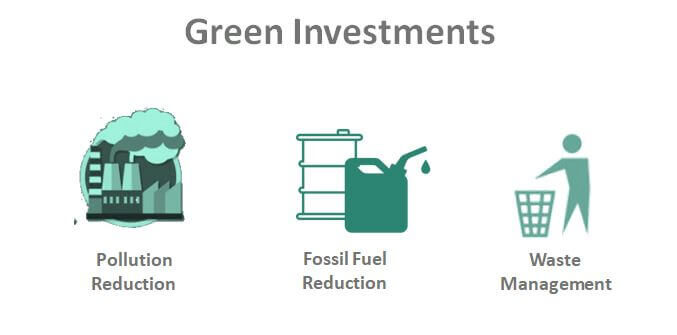The Benefits of Green Investing for Individuals and Institutions

Introduction
- Definition of green investing
- The increasing importance of environmental sustainability
- The growth of green investing
Environmental Benefits of Green Investing
Green investing offers numerous environmental benefits that can positively impact the planet for generations to come. One of the most significant benefits is reduced carbon footprint. By investing in renewable energy, sustainable transportation, and energy-efficient technologies, investors can help reduce greenhouse gas emissions and mitigate the effects of climate change.
Green investing can also contribute to improved air and water quality, as companies invest in cleaner technologies and processes. In addition, investing in sustainable agriculture and biodiversity conservation can help protect natural ecosystems and preserve the world’s natural resources.
Economic Benefits of Green Investing
In addition to the environmental benefits, green investing offers several economic benefits that can help individuals and institutions achieve long-term profitability. One of the most significant benefits is access to new markets. As the world becomes more environmentally conscious, companies that focus on sustainability are increasingly in demand, creating new markets and revenue streams.
Green investing can also provide a competitive advantage for companies that adopt sustainable practices, leading to increased productivity and lower costs. Moreover, green investments tend to be more stable in the long run, as they are less susceptible to market volatility.
Social Benefits of Green Investing
Green investing also offers several social benefits that can positively impact communities and society at large. For example, green investing can contribute to improved public health by reducing pollution and increasing access to clean water and air. Green investments can also lead to job creation, particularly in the renewable energy and sustainable transportation sectors.
Furthermore, green investing can contribute to community development, as companies invest in local infrastructure and initiatives. Green investing can also help reduce income inequality, as it provides opportunities for individuals and communities to participate in sustainable development and share in the economic benefits.
Types of Green Investments
Green investing encompasses a range of investment opportunities, including renewable energy, energy efficiency, sustainable transportation, green buildings, sustainable agriculture, and waste management. Each type of investment offers unique opportunities and challenges, depending on the specific project or company.
Renewable energy, for example, includes investments in solar, wind, hydroelectric, and geothermal energy sources. Energy efficiency investments include initiatives to reduce energy consumption in buildings, manufacturing, and transportation. Sustainable transportation investments include electric vehicles, mass transit, and bike-sharing programs.
Green buildings include investments in buildings that are designed and constructed to be energy-efficient, environmentally sustainable, and healthy for occupants. Sustainable agriculture investments include organic farming, regenerative agriculture, and sustainable forestry. Waste management investments include recycling and waste-to-energy initiatives.
Challenges of Green Investing
Despite the numerous benefits of green investing, there are also several challenges that investors may encounter. One of the main challenges is the lack of standardization in the green investment industry. This can make it difficult to compare and evaluate different investment opportunities.
Moreover, many green investments have a limited track record, making it challenging to assess their long-term performance. Green investments can also be volatile, as they are often dependent on government regulations, subsidies, and public sentiment.
Furthermore, there are often limited investment options available for green investors, particularly for individuals. Finally, the availability of green investment products can be limited, making it challenging to find suitable investment opportunities.
Strategies for Successful Green Investing
To overcome these challenges and achieve successful green investing, investors should adopt a range of strategies. One of the most important strategies is diversification, as this can help reduce risk and increase potential returns.
Moreover, investors should conduct thorough research and due diligence when evaluating green investment opportunities, including an assessment of the potential environmental, social, and economic benefits and risks. Investors should also maintain a long-term focus, as many green investments require a longer time horizon to achieve their full potential.
Finally, investors should actively engage with the companies and projects they invest in, advocating for sustainable practices and policies. Moreover, partnering with like-minded investors and organizations can help amplify the impact of green investments and promote positive change.



